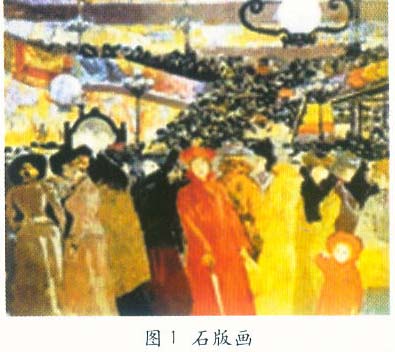Different from the other forms of art, the prints, such as oil paintings, Chinese paintings, and watercolors, are all hand-painted by the artist and do not require a printing studio. But the creation of printmaking is more complex, and studios and printing studios or printing laboratories are indispensable because all prints originate from printing. It can be said that printing technology is the "root" of printmaking art. To a certain extent, printmaking works are typical examples of the perfect combination of the artistic and technical aspects of printing. The development of today's printing technology, the emergence of new technologies and new Materials have enriched the artistic expression of prints and broadened the range of performance of prints, especially for Chinese prints. Approaching prints Modern printmaking is no longer just a painting technique with copying ability. People can also feel the artistic connotation from the unique language of printmaking. Among them, modern aesthetic concepts and printing techniques, as well as international norms of current printmaking, play an important role. 1. The meaning of print In 1960, the International Plastic Arts Association held a meeting in Vienna on the definition of the original print. He made the following three resolutions. (1) For the creation of printmaking works, painters use plates, metal plates, slate, silk screens and other materials to participate in the plate making, so that the creative thoughts are transferred to paper by this version. At the same time, the following two conditions are attached. (1) The single page in which the graphics are not fixed in the printing plate is not a print. From this, the important differences between print originals and print reproductions can be summarized as follows: First, whether the artist personally or supervised the guidance and platemaking in the process of making prints, so that the works reflect the artist's intentions; second, whether the print originals have a number that conforms to the norms. Autographed by the artist. Otherwise, it is considered a printed copy without artistic value. 2. Types of prints The Vienna Conference also stipulated the scope of printmaking and classified the world’s nearly 100 kinds of print names into four categories, namely the four major types of flat, convex, concave, and hole, that is, woodcuts (Chinese ancient woodcut prints). Representations include letterpress, gravure plates represented by copper-zinc metal plates, lithographs represented by stone plates, and screen plates represented by screens. This classification is exactly the same as the classification of the flat, convex, concave, and holes in the printing industry. The history of retrospective world printing is actually the history of printing. The art of printmaking and printing technology are inseparable. In a sense, the printmaking work is a printed copy. The art of printmaking and the technicality of printing are closely linked. According to the different printing plates, the prints are divided into four types: lithographs, copperplates, screen prints, and woodblock prints. 1. Lithograph Like other forms of printmaking, lithographs are both an art and a manifestation of printing technology. An outstanding lithographer does not mean that he has mastered the complicated printing technology, but he needs the printing factory to provide platemaking and printing services. Cooperation with skilled operators is the prerequisite for the completion of high-quality lithographs. The lithograph's commonly used plates include lithographic stone, zinc plate, aluminum plate and PS plate. The lithographs are played in the pursuit of "point" tastes, and the changes in outlets in lithography play an important role, as shown in Figure 1. In fact, the creation process of lithographs is the application of the principle of lithographic printing processes. It mainly uses the principle of repulsion of oil and water in the graphic and non-graphic areas and the principle of selective adsorption. The artistry is mainly reflected in the artistic creation before printing. . (to be continued) A4 book binding machine,book bindingpaper,automatic book bindingmachine,Book binding machine Haotian Printing Machinery Co., Ltd. , http://www.printingmachine-manufacturer.com
(2) Works that the painter personally or supervised by himself and printed directly from the original version.
(3) The artist must sign the original print.
(2) In addition to having the author's signature on the original print, it is necessary to add a trial or limited edition mark.
Printmaking collection 
The lithograph has features such as structuredness, softness of the picture, and unpredictable tone. Modern lithographs can be pre-pressed using computers. In the printing process, PS plates and other modern printing techniques can also be used instead of slate to make lithographs more varied. The use of art net screens in computer design and the flexible transformation of color separations and the changing laws of printing inks can add radiance to lithographs and add to their artistic appeal.